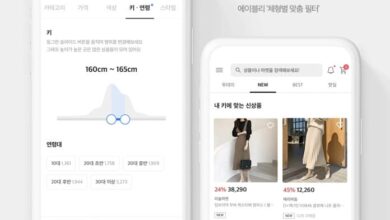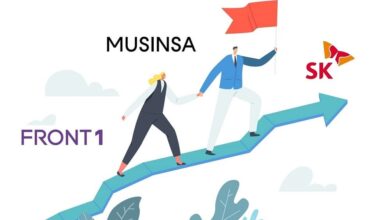KRW 40.8 trillion in 2020, a 2% decline compared to the previous year
The era of the KRW 3 trillion luxury bag market has begun
Last year, the Korean fashion market was sized at KRW 40.8 trillion, a 2% decrease from the previous year.
The Korea Federation of Textile Industries announced on the 11th in the 'Korean Fashion Market Trend' report that the size of the Korean fashion market (KFI·Korea Fashion Index) last year reached KRW 40.8 trillion, a 2% decrease compared to the previous year.
According to the report, after experiencing a shock of negative growth in 2017, the Korean fashion market made efforts to recover, turning to positive growth the following year in 2018. However, it continued to experience negative growth for two consecutive years in 2019 and 2020 due to the global economic downturn caused by the US-China trade dispute and the outbreak of COVID-19 in the second half of 2019.
However, the level of market recovery will likely be influenced by the extent of the re-spread of COVID-19, employment market indicators, and changes in weather conditions. The report argues that growth will be led by aggressive investments in luxury and bag markets, the street casual clothing market that leads trends, and the sneaker market that stimulates new consumption. In particular, the market for easy-wear and athleisure wear is expected to emerge as strategic consumer items due to the spread of remote working.
| Segment | 2019 Performance | 2020 Forecast | Year-over-year growth rate |
| Men's Suits | KRW 4.0582 trillion | KRW 3.6556 trillion | -9.9% |
| Women's Suits | KRW 2.9753 trillion | KRW 2.4538 trillion | -17.5% |
| Casual Wear | KRW 15.6054 trillion | KRW 15.8947 trillion | 1.9% |
| Sportswear | KRW 6.6544 trillion | KRW 6.1463 trillion | -7.6% |
| Underwear | KRW 2.1074 trillion | KRW 2.0333 trillion | -3.5% |
| Children's Clothing | KRW 1.0659 trillion | KRW 0.827 trillion | -22.4% |
| Clothing Market (Total) | KRW 32.4667 trillion | KRW 31.0107 trillion | -4.5% |
| Shoes | KRW 6.2430 trillion | KRW 6.5968 trillion | 5.7% |
| Bags | KRW 2.9345 trillion | KRW 3.1935 trillion | 8.8% |
| Fashion Market (Total) | KRW 41.6441 trillion | KRW 40.8010 trillion | -2.0% |
By category, men's and women's suits have decreased to KRW 3.6556 trillion and KRW 2.4538 trillion respectively, a 9.9% and 17.5% decrease due to remote working. Sportswear also declined by 7.6% to KRW 6.1463 trillion, while children's clothing showed a significant decrease of 22.4% due to the shift to online classes.
On the other hand, driven by the stay-at-home trend, the casual wear market rose slightly by 1.9% to KRW 15.8947 trillion. The normalization of remote working and the lifestyle of refraining from going out have led to popularity in easy-wear and homewear items, indicating continued growth in the casual wear market.
The strength seen since last year in the street casual trend is expected to positively affect the casual wear market's economy. Especially, the sneaker market has rebounded as the generation leading street fashion and luxury consumption, mainly those in their 20s and 30s, continue to purchase trendy sneakers. The sneaker market is expected to grow by 5.7% to KRW 6.5968 trillion. The footwear market, which has been leading the way, is expected to continue its weak trend due to the expansion of remote working, but the fashion sneakers market is expected to drive growth.
The sportswear market, which has been in a downturn for the past few years, is expected to see a slight improvement over the previous year due to the boom in the golf wear and athleisure wear markets. After recording a reverse growth of 10.9% in 2019, it is expected to be KRW 6.1463 trillion, an improvement in the reverse growth rate compared to the previous year.
On the other hand, the men's and women's suit markets, which have continued low growth due to market saturation, are expected to see further consumption declines due to remote working and reduced external events caused by the COVID-19 situation. Men's and women's suits are expected to finish at KRW 3.6556 trillion and KRW 2.4538 trillion respectively, marking a reverse growth of 9.9% and 17.5%. The children's clothing market is also expected to continue its downturn due to the expansion of remote schooling and a decrease in the child population, with a decline of 22.4% to KRW 827 billion in 2020.
The bag market, on the other hand, achieved its best results due to the influence of high-priced luxury consumption, with an increase of 8.8% to KRW 3.1935 trillion compared to the previous year, ushering in the era of the KRW 3 trillion market.
And the underwear market is also expected to narrow the negative growth margin more than expected due to the fashion of home wear in the stay-at-home era, recording a reverse growth of 3.5% to KRW 2.0333 trillion in 2020 compared to the negative 4.4% of the previous year.
A representative of the Textile Industry Federation stated, “The domestic fashion market, centered on offline, has recorded negative growth due to COVID-19,” and “It is time to seek new growth engines through rapid transition to non-face-to-face businesses such as live commerce.”
Read more this category
 1. Hot Summer, Hot Body 'Soyou' Photoshoot
1. Hot Summer, Hot Body 'Soyou' Photoshoot 2. Generation Z has also fallen for the charm of 'RAdog'
2. Generation Z has also fallen for the charm of 'RAdog' 3. Creating the 'Next Commerce Ecosystem' with ABLY
3. Creating the 'Next Commerce Ecosystem' with ABLY 4. Do you know about the dream material 'Graphene'?
4. Do you know about the dream material 'Graphene'? 5. The fashion industry is poised to expand its territory with the launch of licensed brands.
5. The fashion industry is poised to expand its territory with the launch of licensed brands. 6. Expanding the Market Pie: 'Frontier' Companies
6. Expanding the Market Pie: 'Frontier' Companies 7. Fall-Winter 2021 Men's Fashion Trend: 'Workleisure'
7. Fall-Winter 2021 Men's Fashion Trend: 'Workleisure'



